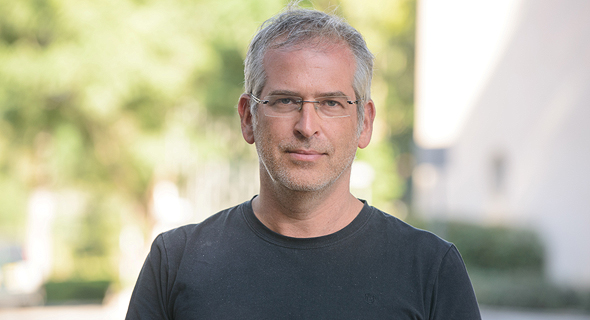Can a Two-Day Workweek Eradicate Coronavirus?
Researchers at Israel's Weizmann Institute developed a model that demonstrates that a weekly cycle of two workdays and five lockdown days can minimize infection rate while maintaining economic activity
11:4001.04.20
Researchers at Israel's Weizmann Institute of Science have developed a new model for containing the spread of Covid-19 while also maintaining economic activity. The key, they say, is a two-day workweek.
According to Professor Uri Alon, a systems biologist, his doctoral students Omer Karin and Yael Korem, and computer engineer Boaz Dudovich, a weekly cycle of two workdays followed by five days of lockdown can provide a good trade-off between minimizing the health impact of coronavirus and keeping the economy healthy. Ultimately, the researchers said, this model can help eradicate the virus.
 Professor Uri Alon. Photo: Weizmann Institute
Professor Uri Alon. Photo: Weizmann Institute "This will be a game-changer," Alon told Calcalist in a recent interview. "We looked at epidemiological models and the way pandemics work. At the same time, many of my friends and acquaintances began to suffer serious economic blows, to the extent of going bankrupt due to the lockdown and restrictions. This financial pandemic drove me crazy. I saw that the public discussion focused on lockdown vs. work, health vs. economy, and my message is that you can reach smart and creative solutions that will find a balance between the two."
According to Alon's model, the basic idea is to reduce the infectivity, R, defined as the average number of people infected by each virus-carrying individual, below the number 1. When R is below 1, the number of infected people declines exponentially, a basic principle of epidemiology. Infectivity in Covid-19 is estimated at R=2 or more, leading to the observed exponentially growing infection rates. The model requires the release from lockdown to be accompanied by strict hygiene. In addition, the release from lockdown cannot apply to those who are confirmed to have contracted the virus or those in high-risk groups.
Related stories:
- Israel Is Tanking its Economy to Save a Few Hundred People, Finance Ministry Officials Say
- To Lift the Lockdown, Israel Needs 30,000 Covid-19 Tests a Day, Says Health Exec
- In Israel, Soldiers to Patrol the Streets in Effort to Enforce Covid-19 Regulations
"In the models which we ran, we discovered that for R to be below 1 it isn't necessary to have a continuous lockdown which is a disaster for the economy," Alon said. "So we checked how to create a smart lockdown and found that the ratio of four workdays during a two-week period would keep entire sectors of the economy afloat and wouldn't destroy the economy. Obviously, a full lockdown will eradicate the virus faster, but having one million people unemployed also comes at a medical cost: death, depression, psychological treatment, and so on. We need to understand that people will die regardless of what policy we implement."
Alon said that the selected ratio has to do with the characteristics of Covid-19. "According to the information we currently have on coronavirus, most carriers aren't infectious for the first four days after they become infected. After that, there is a three-day period in which they are infectious, and later they are no longer infectious," Alon explained. "So if someone becomes infected during their time at work, they will only be infectious when they are back in home isolation. They will be around very few people during that time, which will dramatically reduce the possibility of infecting others.” The model will only work under the condition that everyone is on the same workday schedule. “After a few of these cycles, we will be done with this pandemic,” he said. Since publishing his model, Alon said he was approached by officials from several countries.



